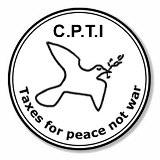On Friday morning we had a valuable meeting in a room of the European Parliament, Belliardstraat, with Richard Balfe, MEP for the British Labour Party. He enjoys the EP for its open-mindedness and for its enriching and stimulating encounters with other MEPs from very different backgrounds. For instance, as the MEPs are seated alphabetically, Richard Balfe from Britain with his Irish background sits next to an Italian priest, who came to the socialist group through liberation theology, and on the other side next to a former foreign minister (Cheysson) from France with his diplomatic experience and a Greek MEP, who has been six years in prison under the Colonels.
Richard Balfe stressed the need to permanently educate the MEPs and to overcome their ignorance and prejudice toward our cause. On March 11, 1985 he tabled a resolution on CO to military taxation. There was a debate in the EP
He felt our best hope of advancing the peace tax bill in the European Community was via the EC's Civil Liberties Committee, which would look at legislation on a class ( i.e. all-European) rather than on an individual basis - which would be the approach taken by the EC's Petitions Committee.
He suggested that candidates for the 1994 European elections be questioned on their opinion about CO to military spending.
After the meeting in the EP Barbara Forbes (Quaker Council on European Affairs in Brussels) gave us some additional information about the structure and bodies of the EC, particularly because some of the names resemble those of the Council of Europe and even those of the U.N.O.
| European Community | Council of Europe |
|---|---|
| 1. Now 12 countries | 1. 27 countries (+ special guests) |
| 2. Economic and political matters | 2. Human rights and parliamentary democracy |
| 3. 518 elected MEPs | 3. Each country sends a number of national MPs |
4. Bodies:
|
4. Bodies:
|
